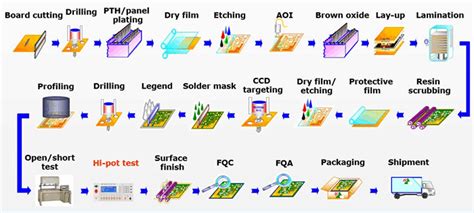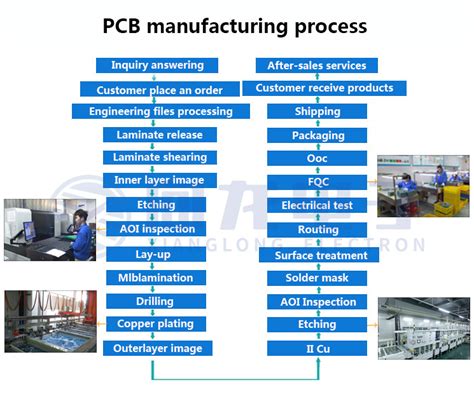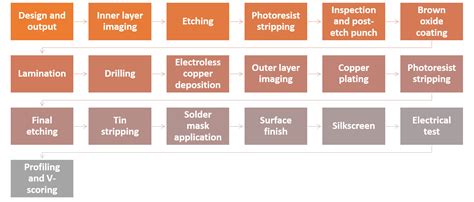Introduction to PCB Manufacturing
Printed Circuit Boards (PCBs) are the backbone of modern electronics. These thin, flat boards are used to mechanically support and electrically connect electronic components using conductive pathways, tracks, or signal traces etched from copper sheets laminated onto a non-conductive substrate. PCBs are found in virtually every electronic device, from smartphones and computers to medical equipment and aerospace systems.
The PCB manufacturing industry has grown significantly over the past few decades, with several countries emerging as major players in the global market. In this article, we will explore which country is the largest manufacturer of PCBs and discuss the factors that have contributed to its success.
Global PCB Manufacturing Market Overview
The global PCB market is expected to reach USD 89.7 billion by 2024, growing at a CAGR of 4.3% from 2019 to 2024. The increasing demand for smartphones, IoT devices, and automotive electronics is driving the growth of the PCB industry.
| Region | Market Share (2019) |
|---|---|
| Asia Pacific | 90% |
| Europe | 5% |
| North America | 3% |
| Rest of the World | 2% |
Source: Mordor Intelligence
As evident from the table above, the Asia Pacific region dominates the global PCB manufacturing market, with a 90% market share in 2019. This can be attributed to the presence of several major PCB manufacturing countries in the region, such as China, Taiwan, South Korea, and Japan.

China: The Largest PCB Manufacturing Country
Overview of China’s PCB Industry
China is the world’s largest manufacturer of PCBs, accounting for over 50% of the global production. The country’s PCB industry has grown rapidly over the past few decades, driven by factors such as low labor costs, government support, and a vast domestic market.
| Year | China’s PCB Output Value (Billion USD) |
|---|---|
| 2010 | 21.5 |
| 2015 | 26.8 |
| 2020 | 32.7 |
Source: China Printed Circuit Association (CPCA)
As shown in the table above, China’s PCB output value has been steadily increasing, reaching USD 32.7 billion in 2020. This growth can be attributed to the country’s strong position in the global electronics supply chain and its ability to cater to the increasing demand for PCBs from various end-use industries.
Factors Contributing to China’s Success
1. Low Labor Costs
One of the primary reasons for China’s dominance in the PCB manufacturing industry is its low labor costs. The country’s vast pool of skilled workers and relatively lower wages compared to other developed nations have allowed Chinese PCB manufacturers to offer competitive prices and attract global customers.
2. Government Support
The Chinese government has played a crucial role in the growth of the country’s PCB industry. Through various policies and initiatives, such as tax incentives, subsidies, and infrastructure development, the government has created a favorable environment for PCB manufacturers to thrive.
3. Strong Supply Chain
China has a well-established and efficient supply chain for PCB manufacturing. The country is home to numerous suppliers of raw materials, components, and equipment, enabling PCB manufacturers to source inputs easily and cost-effectively. This strong supply chain has contributed to China’s ability to deliver high-quality PCBs at competitive prices.
4. Technological Advancements
Chinese PCB manufacturers have been investing heavily in research and development (R&D) to stay ahead of the curve in terms of technological advancements. The adoption of advanced manufacturing techniques, such as high-density interconnect (HDI) and flexible PCBs, has allowed Chinese companies to cater to the evolving needs of the electronics industry.

Other Major PCB Manufacturing Countries
While China is the largest manufacturer of PCBs, several other countries also play significant roles in the global PCB industry.
Taiwan
Taiwan is the second-largest PCB manufacturing country, with a market share of around 12%. The country is known for its expertise in high-end PCBs, such as those used in smartphones and other advanced electronic devices. Taiwanese PCB manufacturers, such as Unimicron and Nanya PCB, have established themselves as key players in the global market.
South Korea
South Korea is another major PCB manufacturing country, with a market share of approximately 10%. The country’s PCB industry is characterized by its focus on advanced technology and high-quality products. South Korean PCB manufacturers, such as Samsung Electro-Mechanics and LG Innotek, are known for their expertise in multilayer and rigid-flex PCBs.
Japan
Japan has a long history in the PCB manufacturing industry and is known for its high-quality products and advanced technology. Although the country’s market share has declined in recent years due to competition from China and other Asian countries, Japanese PCB manufacturers, such as Ibiden and Nippon Mektron, continue to be important players in the global market.

Challenges and Opportunities in the PCB Manufacturing Industry
Environmental Concerns
One of the major challenges faced by the PCB manufacturing industry is the environmental impact of its processes. PCB production involves the use of hazardous chemicals and generates a significant amount of waste, which can harm the environment if not properly managed. To address these concerns, PCB manufacturers are adopting eco-friendly practices, such as using biodegradable materials and implementing waste reduction strategies.
Technological Advancements
The rapid pace of technological advancements in the electronics industry presents both challenges and opportunities for PCB manufacturers. As electronic devices become more compact and sophisticated, PCB manufacturers must continuously innovate and adapt to meet the changing requirements. This has led to the development of advanced PCB technologies, such as HDI, flexible, and rigid-flex PCBs, which offer improved performance and functionality.
Geopolitical Factors
Geopolitical factors, such as trade disputes and tariffs, can significantly impact the PCB manufacturing industry. For example, the ongoing trade tensions between the United States and China have led to increased tariffs on PCBs and other electronic components, affecting the supply chain and pricing dynamics of the industry. PCB manufacturers must navigate these challenges and adapt their strategies accordingly to remain competitive in the global market.
Conclusion
China is the largest manufacturer of PCBs, accounting for over 50% of the global production. The country’s success can be attributed to factors such as low labor costs, government support, a strong supply chain, and technological advancements. While other countries, such as Taiwan, South Korea, and Japan, also play significant roles in the global PCB industry, China’s dominance is expected to continue in the foreseeable future.
As the PCB manufacturing industry continues to evolve, companies must address challenges such as environmental concerns, technological advancements, and geopolitical factors to remain competitive. By adopting eco-friendly practices, investing in advanced technologies, and adapting to changing market dynamics, PCB manufacturers can capitalize on the opportunities presented by the growing demand for electronic devices worldwide.
Frequently Asked Questions (FAQ)
1. What is a PCB, and what is it used for?
A Printed Circuit Board (PCB) is a flat, thin board used to mechanically support and electrically connect electronic components using conductive pathways, tracks, or signal traces etched from copper sheets laminated onto a non-conductive substrate. PCBs are used in virtually every electronic device, from smartphones and computers to medical equipment and aerospace systems.
2. Why is China the largest manufacturer of PCBs?
China is the largest manufacturer of PCBs due to several factors, including low labor costs, government support, a strong supply chain, and technological advancements. The country’s vast pool of skilled workers, favorable government policies, and well-established supply chain have allowed Chinese PCB manufacturers to offer competitive prices and attract global customers.
3. What are some of the challenges faced by the PCB manufacturing industry?
Some of the challenges faced by the PCB manufacturing industry include environmental concerns, technological advancements, and geopolitical factors. PCB production involves the use of hazardous chemicals and generates waste, which can harm the environment if not properly managed. The rapid pace of technological advancements in the electronics industry requires PCB manufacturers to continuously innovate and adapt to meet changing requirements. Geopolitical factors, such as trade disputes and tariffs, can also impact the supply chain and pricing dynamics of the industry.
4. What are some of the advanced technologies used in PCB manufacturing?
Some of the advanced technologies used in PCB manufacturing include High-Density Interconnect (HDI), flexible, and rigid-flex PCBs. HDI PCBs offer higher component density and improved signal integrity, while flexible and rigid-flex PCBs provide enhanced flexibility and durability for applications that require bending or folding of the board.
5. What is the future outlook for the global PCB manufacturing industry?
The global PCB manufacturing industry is expected to continue growing, driven by the increasing demand for electronic devices across various sectors, such as consumer electronics, automotive, healthcare, and aerospace. As the industry evolves, PCB manufacturers will need to focus on adopting eco-friendly practices, investing in advanced technologies, and adapting to changing market dynamics to remain competitive in the global market.

Leave a Reply